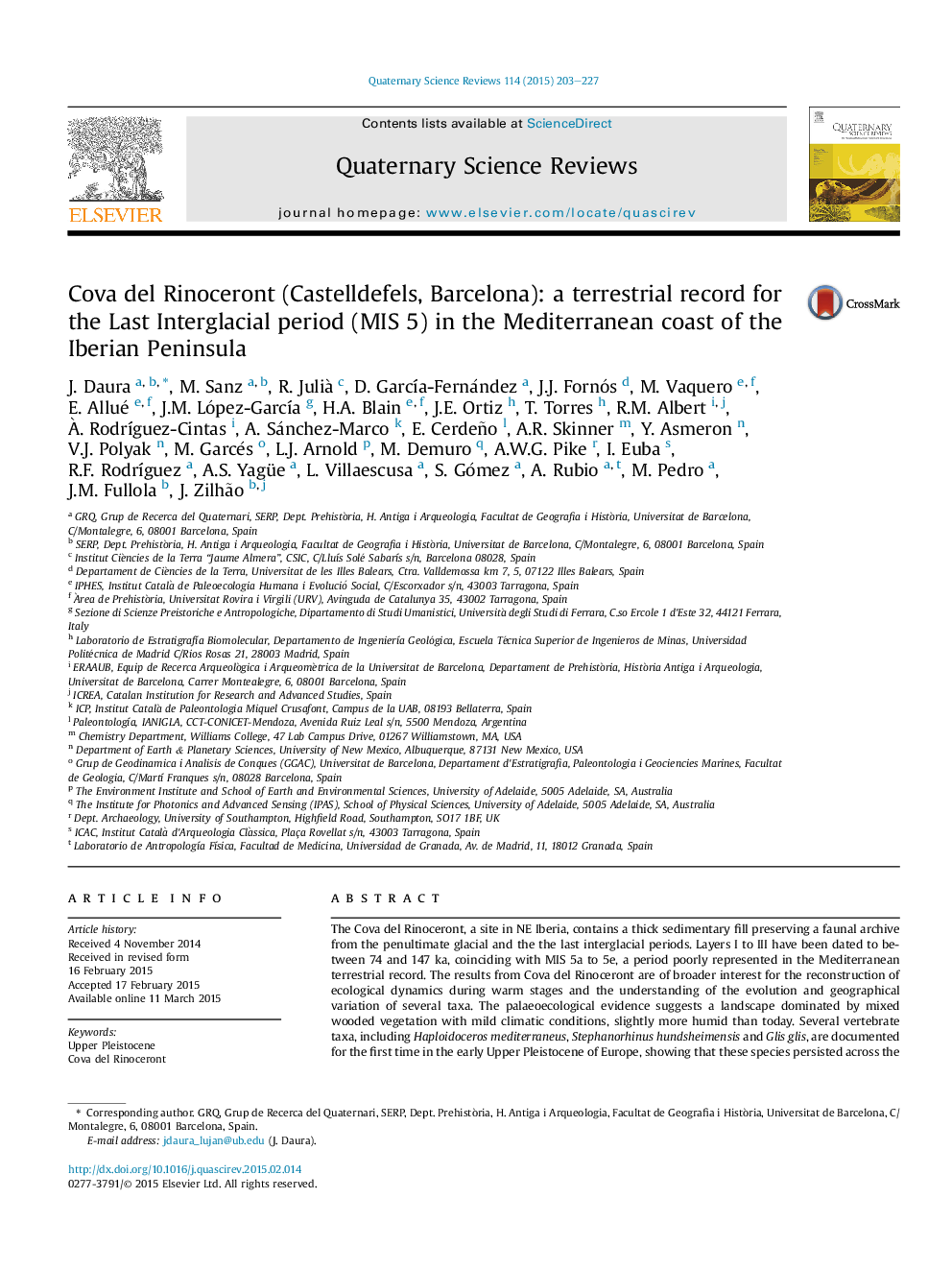| کد مقاله | کد نشریه | سال انتشار | مقاله انگلیسی | نسخه تمام متن |
|---|---|---|---|---|
| 4736393 | 1640820 | 2015 | 25 صفحه PDF | دانلود رایگان |

• MIS 5a to 5e terrestrial multiproxy data.
• First early Upper Pleistocene occurrence of several taxa.
• Comparative application of a range of geochronological methods.
The Cova del Rinoceront, a site in NE Iberia, contains a thick sedimentary fill preserving a faunal archive from the penultimate glacial and the the last interglacial periods. Layers I to III have been dated to between 74 and 147 ka, coinciding with MIS 5a to 5e, a period poorly represented in the Mediterranean terrestrial record. The results from Cova del Rinoceront are of broader interest for the reconstruction of ecological dynamics during warm stages and the understanding of the evolution and geographical variation of several taxa. The palaeoecological evidence suggests a landscape dominated by mixed wooded vegetation with mild climatic conditions, slightly more humid than today. Several vertebrate taxa, including Haploidoceros mediterraneus, Stephanorhinus hundsheimensis and Glis glis, are documented for the first time in the early Upper Pleistocene of Europe, showing that these species persisted across the region for longer than previously thought. In addition, the recovery of a small lithic assemblage indicates human presence in the surroundings of the site. The 11 m-thick stratigraphic section also provides an ideal setting in which to compare several geochronological methods. U–Th dating of the flowstones that cap the deposit, of speleothems formed along the cave walls, and of speleothems buried by the deposit at different elevations provides minimum and maximum ages of 74 and 175 ka, respectively, for the accumulation. The ages obtained by luminescence, electron spin resonance (ESR), amino acid racemisation (AAR), palaeomagnetism and U-series dating of bone are in good agreement with each other and are stratigraphically consistent. This well-dated faunal succession presents a unique opportunity to assess changes in the Pleistocene fauna of the Mediterranean coast over an interval of more than 100 ka.
Journal: Quaternary Science Reviews - Volume 114, 15 April 2015, Pages 203–227